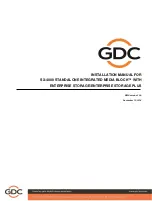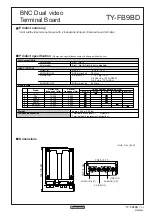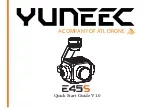
Page 14
•
pull the handle outwards in order to extract the reserve parachute from the
harness container
•
look for a clear area, and, in a continuous motion, throw the reserve parachute
away from yourself and the paraglider
To keep the paraglider from interfering with the rescue parachute, proceed as
follows opening:
If the leading edge of the paraglider is facing upward, grip the back risers or the
brakes and pull them toward you to help deflate. If instead the leading edge of the
paraglider is facing downward, pull the back risers or a brake and rotate the
paraglider with the leading edge upward and then pull both brakes or back
” risers
to help deflate the paraglider wing
On landing, adopt an upright body position, and ensure that you perform a PLF
(Parachute Landing Fall) to minimize the risk of injury.
Before landing, slide your legs out and off the seat surface, so that you take up a
standing position. Never land in the seated position; it is extremely dangerous for
your back even if you have foam dorsal protection, which provides exclusively
passive protection. Standing up before landing is an active safety precaution, and
it is much more effective than passive forms of protection.
There are no specific problems connected to flying above water using a XEMA 2
harness, but in any case, landing in water is always dangerous. ICARO
Paragliders recommends using a suitable lifejacket when flying above water.
Folding the harness and using the rucksack
To change from harness to backpack configuration,
•
completely open the back pocket and enlarge the backpack inside.
•
Turn the entire structure upside down and fold the seat against the harness
back, leaving the whole set of belts and buckles inside the sandwich that is
created between the back and seat. Put the previously folded paraglider above
the harness airbag.
•
Pull the part of the back pocket and finally the closure of the rucksack over the
paraglider. To close the zipper easily, press the backpack together so that the
air remaining in the paraglider and airbag can escape. In the upper part there is
enough space for the instruments, the helmet, and some items of clothing.
Once the equipment is stowed away, the four side straps must be tightened so
that the contents are compact and stable for comfort. The adjustment straps on
the shoulder straps of the backpack can also be used for this purpose.
•
Do not fold the rigid Lexan part on itself as sharp folds could be created,
damaging it. This would cause airbag deformation which could compromise
correct function.
•
When preparing for flight, perform operations in reverse order and, finally, fold
the part of the backpack in the rear harness pocket.
Optional accessory
Leg extension
The leg extension is intended to facilitate the extended leg posture and as a
footrest to serve. Some pilots find this posture to be the more comfortable position
instead of simply dangling their legs. To assemble the footrest, please follow the
instructions for use.
Содержание XEMA 2
Страница 1: ...Page 1 MANUAL Version 1 2021...






































